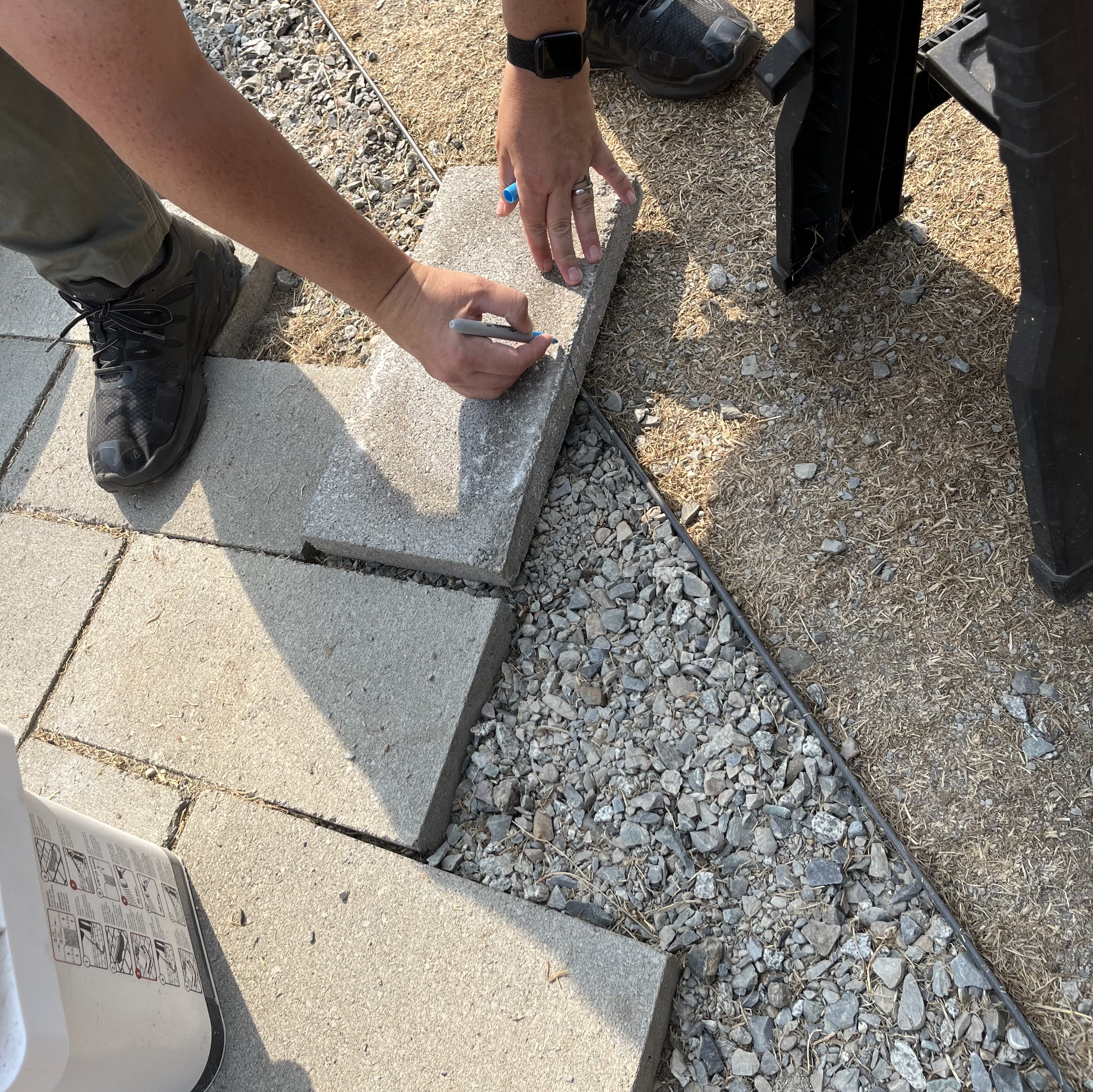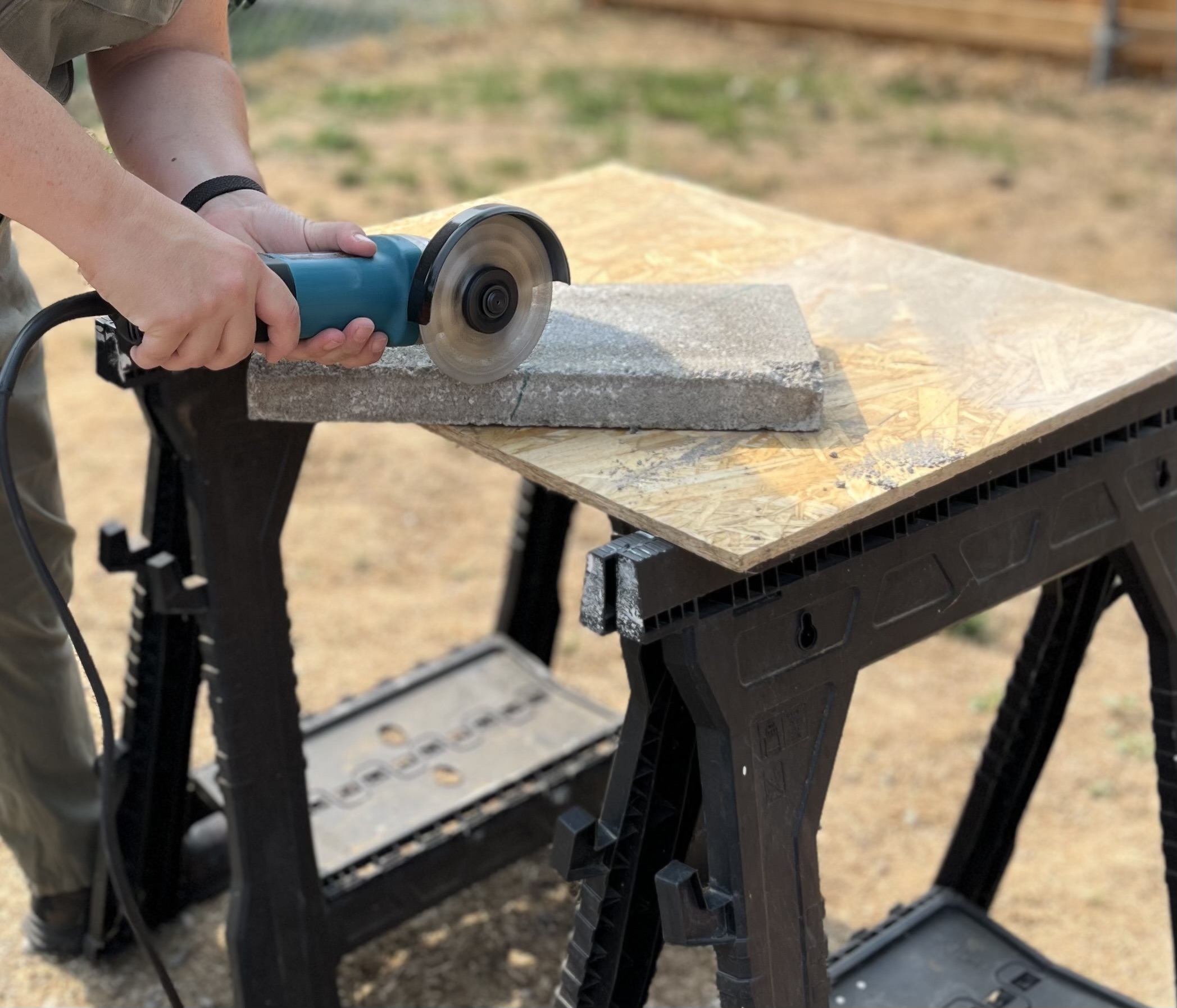How to Cut Cement Pavers
Creating a beautiful patio requires precision, and knowing how to cut patio pavers is essential for achieving a flawless fit. Whether you're shaping pavers to fit around edges, curves, or obstacles, the right cutting techniques can make all the difference.
In this guide, we’ll walk you through the best tools and methods to cut patio pavers with accuracy and ease. From using a simple hammer and chisel to power tools like angle grinders and wet saws, you'll learn the pros and cons of each approach. Plus, we’ll cover essential safety tips to keep your project smooth and injury-free.
Ready to master the art of cutting patio pavers? Let’s dive in!
Essential Safety Tips for Cutting Patio Pavers
Before you start cutting patio pavers,

Dust Mask

Gloves

Hearing Protection
.png)
Safety Glasses
Once you're geared up and ready to go, it's time to explore the best methods for cutting patio pavers efficiently and precisely. Whether you're using hand tools like a hammer and chisel or power tools such as an angle grinder or wet saw, this guide will walk you through each technique step by step. Let’s get started!
Understanding the Nature of Patio Pavers
Patio pavers come in a variety of materials, including concrete, brick, and natural stone, each with its own unique characteristics. One key challenge when cutting pavers is that they are porous, rigid, and often not perfectly square.
Porous Structure: Many pavers, especially concrete and some types of natural stone, have tiny air pockets that can make them prone to chipping or crumbling if not cut properly.Rigid Composition: Unlike wood or plastic, pavers are extremely hard and dense, requiring specialized tools like an angle grinder, wet saw, or chisel to make clean cuts.Irregular Shapes: Even factory-made pavers can have slight imperfections or variations in size. If you're working with natural stone, expect uneven edges and non-uniform thickness, which can make precision cutting more challenging.
Choosing the Right Tools for Cutting Patio Pavers
To achieve clean and precise cuts, selecting the right tool is crucial. The best tool for the job depends on the type of paver you're cutting, the complexity of the cuts, and your level of experience. Here are the most common tools used for cutting patio pavers:
- Hammer and Masonry Chisel: A simple and budget-friendly method for making rough cuts, ideal for softer pavers or when a rustic edge is acceptable.
- Angle Grinder: A versatile power tool equipped with a diamond blade that can make straight and curved cuts with precision. Best for quick, small-scale projects.
- Wet Saw: The best option for precise, professional-quality cuts, especially for dense or natural stone pavers. The water helps minimize dust and keeps the blade cool.
- Block Splitter: A manual tool that applies pressure to break pavers cleanly, ideal for large projects where speed is a priority.
Choosing the right tool will ensure a smoother cutting process, reducing waste and improving the overall look of your patio design.
We had great success using a hammer and chisel to cut all the bricks for our retaining wall. However, those bricks were much denser and less porous than the patio pavers. When I attempted the same method for the herringbone patio, the pavers kept breaking unpredictably, often in the wrong spot, making them unusable.
At the time, I had a sawsall but not an angle grinder, so I purchased a masonry blade to give it a try. While it worked better than the hammer and masonry chisel, it was still far from efficient. The cutting process was slow, taking an incredibly long time to get through each brick. If I stopped before cutting all the way through and tried to finish with a chisel, it left rough, jagged edges that wouldn’t fit properly within the paver pattern for the patio.
The Best Method for Cutting Patio Pavers Efficiently
After trying various techniques, it became clear that using the right power tool made all the difference in achieving clean, precise cuts while saving time and effort. The most effective method for cutting patio pavers is using either an angle grinder with a diamond blade or a wet saw.
How to Cut Pavers with an Angle Grinder
Using an angle grinder with a diamond blade is one of the most efficient ways to cut patio pavers. It provides precision, control, and versatility, making it ideal for straight cuts, curves, and intricate shapes. Follow these steps to achieve clean, accurate cuts:
Tools and Materials Needed:
- Angle Grinder
- Diamond Blade
- Safety Gear
- Clamps or Stable Work Surface
- Straight Egde
- Marking Utensil
Step 1: Mark The Cut Line
Use a measuring tape and pencil (or chalk) to mark the exact spot where the cut needs to be made. If cutting a straight edge, use a straight edge or ruler to ensure accuracy.For curved or angled cuts, trace the shape carefully.
When cutting pavers for a patio remember that sand is needed between each paver. That means you need to leave a gap when measuring otherwise the paver you cut will be too big for the space.

Step 2: Secure the Paver
Place the paver on a stable, flat surface, such as a workbench or a piece of scrap wood. If possible, clamp it down to prevent movement while cutting.
Step 3: Put on Safety Gear
Cutting pavers generates a lot of dust and flying debris, so wear safety goggles, a dust mask, gloves, and ear protection. There were a few times when I felt a small pebble of the paver hit my face while cutting, I would hate to have a piece get into my eye.
Step 4: Score the Surface
Start the angle grinder and let it reach full speed before making contact with the paver. Lightly run the grinder along the cut line, scoring the surface about 1/8-inch deep. This initial pass helps guide the blade and reduces the chance of chipping.

Step 5: Make the Full Cut
Once the surface is scored, make multiple passes, going deeper with each pass until you cut all the way through. Avoid forcing the grinder—let the blade do the work to prevent overheating and uneven cuts.
Step 6: Smooth the Edges (Optional)
If the cut edge is rough, lightly grind the edges with the angle grinder for a smoother finish. This step is especially helpful when fitting pavers tightly together in a pattern.
Pro Tips for Cutting Pavers with an Angle Grinder:
- Use a high-quality diamond blade to make cleaner cuts and reduce chipping.
- Make shallow passes instead of trying to cut through in one go—this minimizes breakage.
- Cut outdoors or use a dust collection system to control dust and maintain visibility.
Up Next:
Just Completed:
Check out our latest article where we share the complete process of creating a stunning herringbone patio! From selecting the right materials to laying the intricate pattern, we take you through every step with tips and tricks we learned along the way.
Herringbone PatioUp Next:
Now that the pattio is completed the next step is to add shade and a little bit of protection from the elements. We will be choosing either a pergola kit or building plans to enhance the patio buy adding a pergola surounding it.
Pergola Inspiration